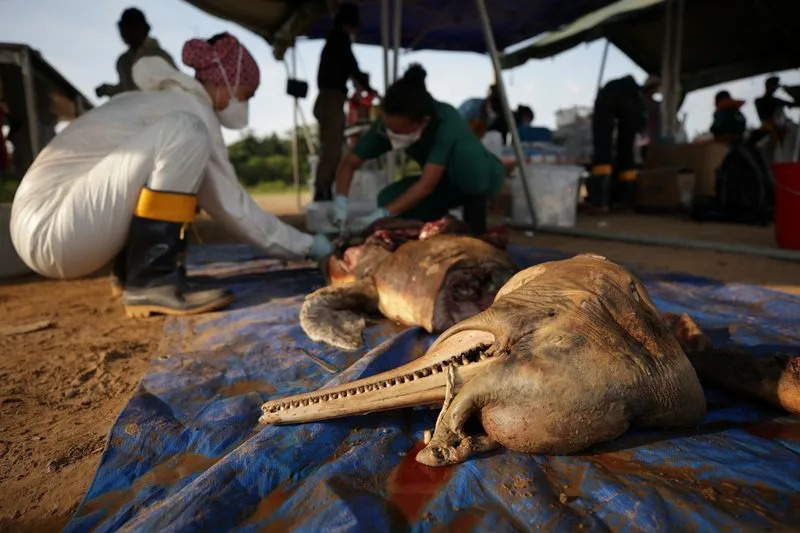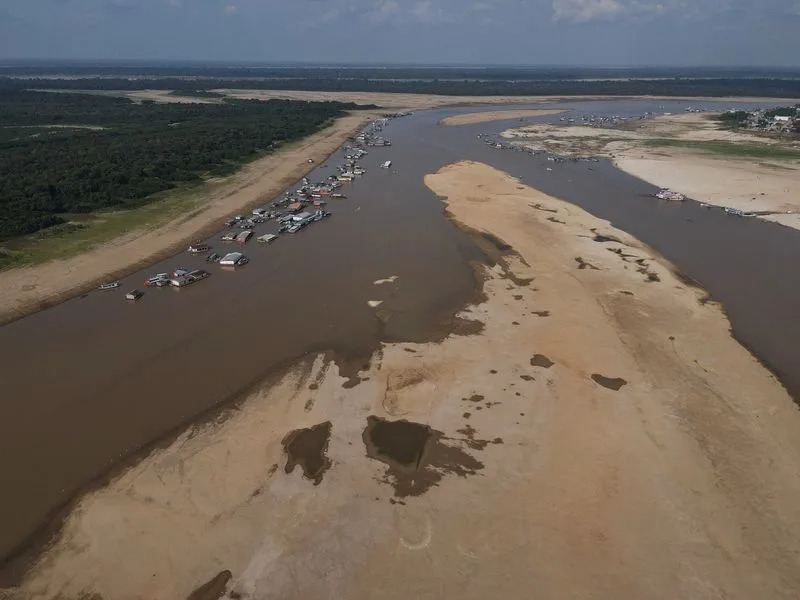WAYNE PARRY
Mon, October 2, 2023


- Land-based wind turbines in Atlantic City, N.J., turn on July 20, 2023. Two major offshore wind power projects are taking steps forward in New Jersey as the owners of one project agreed to bring the federal government in on their environmental monitoring plans at an earlier stage than has ever been done, and federal regulators said plans for another project are not expected to kill or seriously injure marine life. They come as New Jersey continues to grow as a hub of opposition to offshore wind projects from residents' groups and their political allies, mostly Republicans
SEASIDE HEIGHTS, N.J. (AP) — A proposed wind energy project off New Jersey would be among the farthest from land on the East Coast, the New York-based development company said Monday.
Attentive Energy released new information on the project, which will be 42 miles (67 kilometers) off Seaside Heights and provide enough energy to power 600,000 homes. State regulators did not identify the company when bids were received in August — one of four received as the state pushes to become the East Coast hub of the nascent offshore wind industry.
Wind power developers have struggled to make progress, however, due to supply chain issues, higher interest rates, and a failure so far to garner enough tax credits from the federal government.
Damian Bednarz, the company's managing director, told The Associated Press that it passed on bidding on undersea sites closer to the shore because it feels its site is situated to take advantage of the strongest winds.
“We believe it has the best positioning in terms of wind resources,” he said. “It's in a position geophysically to have the best opportunity to get the most wind.”
Bednarz also said the project's turbines — the exact number of which the company has not revealed — will not be visible from the shoreline, eliminating one potential source of opposition from homeowners and residents' groups who object to the likelihood of seeing the structures on the horizon from the beach.
One of the proposals made in August, from Chicago-based Invenergy and New York-based energyRE, would be built 40 miles (64 kilometers) off Long Beach Island called Leading Light Wind. It would consist of up to 100 turbines, enough to power 1 million homes.
Another, from Community Offshore Wind, would be based 37 miles (59 kilometers) off Long Beach Island, and generate enough electricity to power 500,000 homes. The project would be built by Essen, Germany-based RWE and New York-based National Grid.
The state has already approved three other offshore wind projects from previous solicitations in waters closer to shore, where the likelihood of seeing the turbines from shore has generated opposition. Orsted, the Danish wind energy company, would build its first project about 13 to 15 miles off the coast of Atlantic City and Ocean City.
Robin Shaffer, a spokesman for one of the main offshore wind opposition groups, Ocean City-based Protect Our Coast NJ, said it doesn't matter how near or far wind farms are from the coast.
“Offshore wind development makes no sense from either an environmental or economic standpoint,” he said. “As more people get to know about how much carbon goes into creating a wind turbine, as they learn about the harm that will come to their happy places down the shore, and as they come to terms with the fact their electricity rates will increase substantially, they are becoming more and more disenchanted with offshore wind as a cure for climate change.”
Opposing offshore wind has become a major talking point in Republican political campaigns as well. GOP Congressmen succeeded in getting the Government Accountability Office to open an inquiry into the industry in June.
Part of the Attentive Energy project involves constructing a facility to manufacture wind towers at the New Jersey Wind Port in Paulsboro, where the giant steel monopiles are currently being produced. The towers are steel components that are placed above the monopiles, Bednarz said. He did not estimate its cost.
Attentive Energy hopes to begin construction and operations in the early 2030s once the necessary approvals are obtained.
It is pursuing another offshore wind project in New York about 50 miles south of Jones Beach.
Attentive Energy is a collaboration between Houston-based Total Energies, and Corio Generation, with offices in Boston and London.
___
Follow Wayne Parry on X, formerly known as Twitter, at www.twitter.com/WayneParryAC























